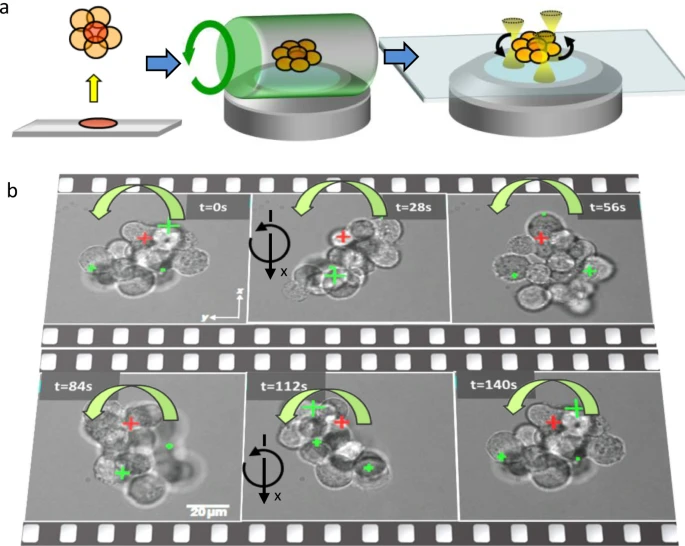Science Daily December 23, 2021
Although optical trapping forces are strong enough and related photodamage is acceptable, the precise (re-) orientation of large specimen with multiple optical traps is difficult, since they grab blindly at the object and often slip off. Researchers in Germany have developed an approach to localize and track regions with increased refractive index using several holographic optical traps with a single camera in an off-focus position. They estimated the 3D grabbing positions around several trapping foci in parallel through analysis of the beam deformations, which are continuously measured by defocused camera images of cellular structures inside cell clusters. Although non-blind optical trapping is still a vision, this is an important step towards fully computer-controlled orientation and feature-optimized laser scanning of sub-mm sized biological specimen for future 3D light microscopy…read more. Open Access TECHNICAL ARTICLE

Positioning and orientation of biological specimen. Credit: Nature Communications volume 12, Article number: 6922 (2021)